Related Research Articles

Paolo Caliari, known as Paolo Veronese, was an Italian Renaissance painter based in Venice, known for extremely large history paintings of religion and mythology, such as The Wedding at Cana (1563) and The Feast in the House of Levi (1573). Included with Titian, a generation older, and Tintoretto, a decade senior, Veronese is one of the "great trio that dominated Venetian painting of the cinquecento" and the Late Renaissance in the 16th century. Known as a supreme colorist, and after an early period with Mannerism, Paolo Veronese developed a naturalist style of painting, influenced by Titian.
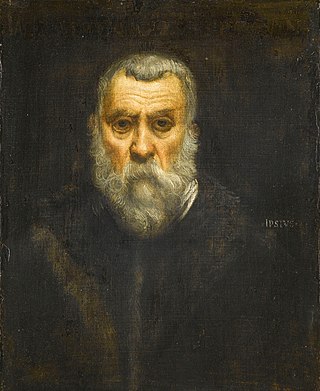
Jacopo Robusti, best known as Tintoretto, was an Italian Renaissance painter of the Venetian school. His contemporaries both admired and criticized the speed with which he painted, and the unprecedented boldness of his brushwork. For his phenomenal energy in painting he was termed il Furioso. His work is characterised by his muscular figures, dramatic gestures and bold use of perspective, in the Mannerist style.
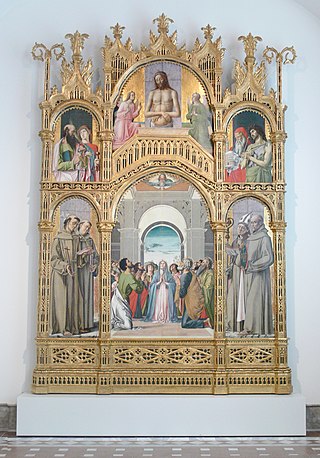
Alvise or Luigi Vivarini (1442/1453–1503/1505) was an Italian painter, the leading Venetian artist before Giovanni Bellini. Like Bellini, he was part of a dynasty of painters. His father was Antonio Vivarini and his uncle, with whom he may have trained, was Bartolomeo Vivarini. Another uncle, on his mother's side, was the artist known as Giovanni d'Alemagna, who worked with his brother-in-law Antonio. Alvise may have trained Jacopo de' Barbari.

Paolo Farinati was an Italian painter of the Mannerist style, active in mainly in his native Verona, but also in Mantua and Venice.

Antonio Vassilacchi, also called L'Aliense, was a Greek painter, who was active mostly in Venice and the Veneto.

Antonio Balestra was an Italian painter of the Rococo period.

Battista Franco Veneziano also known by his correct name of Giovanni Battista Franco was an Italian Mannerist painter and printmaker in etching active in Rome, Urbino, and Venice in the mid 16th century. He is also known as il Semolei or just Battista Franco.

Santi Prunati was an Italian painter of the Baroque era, born and mainly active in Verona.
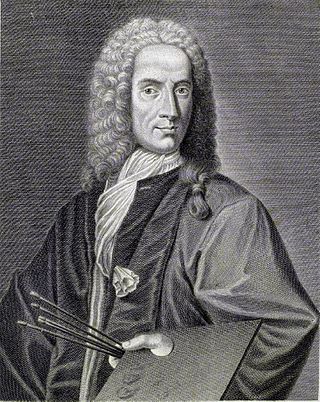
Antonio Zanchi was an Italian painter of the Baroque, active mainly in Venice, but his prolific works can also be seen in Padova, Treviso, Rovigo, Verona, Vicenza, Loreto, Brescia, Milano, and Bergamo, as well as Bavaria.

Francesco Bissolo was a Venetian painter of the Renaissance. He is also known as Pier Francesco Bissolo.
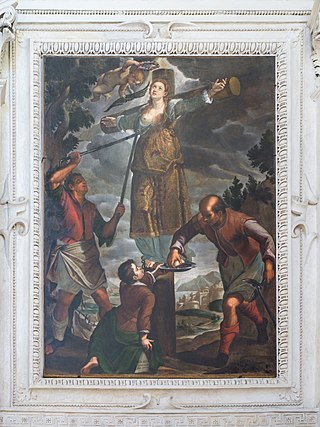
Grazio Cossali, sometimes called Orazio Cossali was an Italian painter who worked in Brescia, Cremona, and Venice, active during the Mannerist or early Baroque periods.

Marco Antonio Bassetti (1586–1630) was an Italian painter.
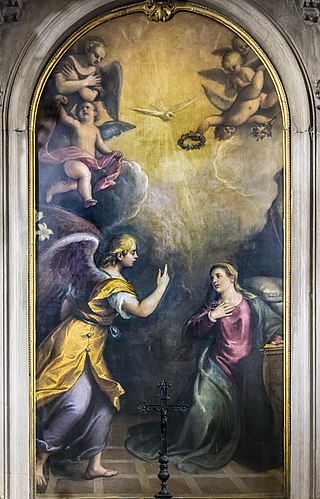
Marco Vecellio (1545–1611) was an Italian painter of the Renaissance period. He was also called Marco di Tiziano, since he was Titian's nephew. He was born and active mainly in Venice. He accompanied his distinguished uncle in the journeys to Rome and Germany. He was the favorite pupil of Titian, and approached nearer to his style than any other member of the family. There are several pictures by him in the Doge's palace, among the best an allegory in the ante-chamber to the Sala del Gran Consiglio. Another good example is a picture in the Sala della Bussola, Doge Leonardo Donato before the Virgin and Infant Christ. He also painted for churches at Venice, Treviso, and in the Friuli, among other things a Christ fulminating the world, and The Virgin on Earth Sending the Two Founders Dominic and Francis for the church of San Zaniopolo at Venice.

Emmanuel Tzanes, also known as BounialisEmmanuel Tzane-Bounialis, Emmanuel Zane, and Emmanuel Tzane, was a Greek Renaissance painter, author, clergyman, and educator. He spent the latter half of his life in Venice, where he was parish priest of the church of San Giorgio dei Greci and a member of the Flanginian School run by the city's Greek Confraternity. Tzanes painted in the style of the Cretan School, influenced by contemporary trends in Venetian painting. His known extant works, over 130 in number, can be found in public foundations, private collections, churches and monasteries in Greece. The most popular of these is The Holy Towel, finished in 1659. Tzanes was a collaborator with Philotheos Skoufos, and brothers with the painter Konstantinos Tzanes and the poet Marinos Tzanes.
Mauro Aldrovandini (1649–1680) was an Italian painter of the Baroque period. While he was most active in Bologna, and some claim he was native to the city, others claim he was born in Rovigo. He mainly painted perspective views and architectural subjects (quadratura) in private houses and for theaters.
Paolo Panelli was an Italian painter of the Late-Baroque, active in mainly in Verona.
Giovanni Battista dalla Torre or Della Torre (1585-1641) was an Italian painter of the Baroque era. He was born in Rovigo but grew up in Ferrara. He trained under Carlo Bononi. He painted in the chapel of San Domenico in the church of the Franciscan Order. He painted in San Nicolo de Somaschi, in the apse over the choir. He also painted in Ferrara. He was murdered in Venice in 1631.
The Baseggio Family included wood sculptors, painter, and an architect active mainly near Rovigo.

Vittorio Emanuele Bressanin was an Italian painter.
Antonio Carneo (1637–1692) was an Italian painter, active in Friuli and Venice, and depicting both mythologic, allegoric, and religious canvases, as well as portraits.
References
- ↑ Bartoli, Francesco (1793). Le pitture, sculture ed architetture della città di Rovigo: con indici ed illustrazioni. Googlebooks. Pietro Savoni, Venice. p. 313. ISBN 978-1-02-231388-0.
- ↑ Witchcraft and Inquisition in Early Modern Venice’’ by Jonathan Seitz. Page 233.
- Bryan, Michael (1886). Robert Edmund Graves (ed.). Dictionary of Painters and Engravers, Biographical and Critical. Vol. I A-K. London: George Bell and Sons. p. 16.